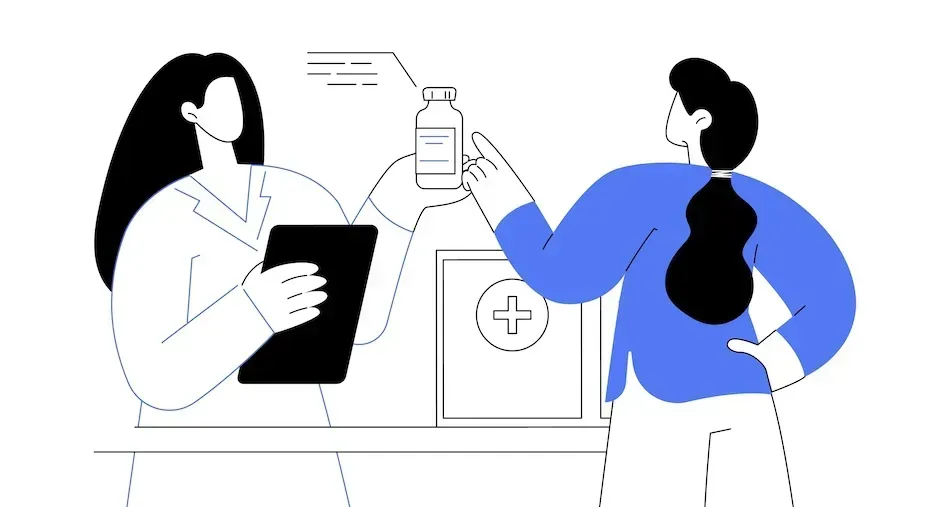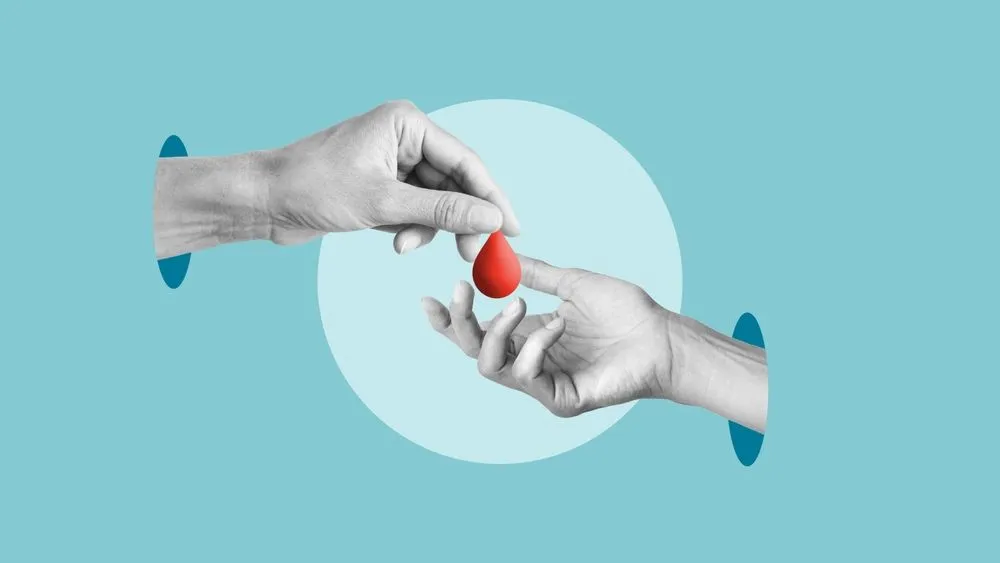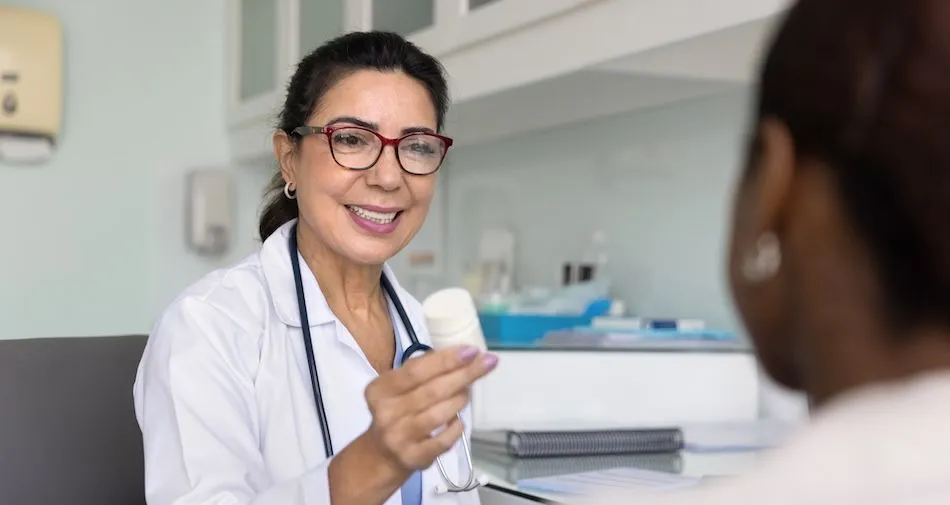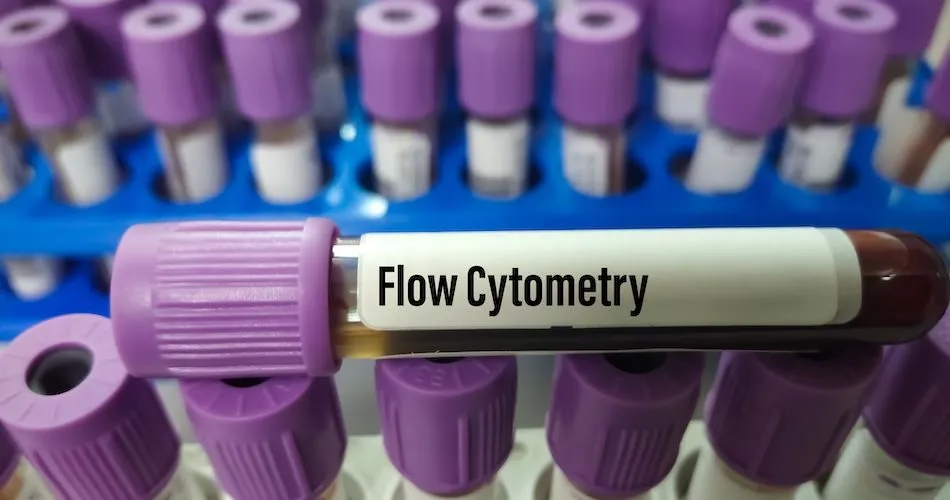Understanding Secondary Cancer Risks in CLL: Signs, Screening, and Prevention

In a recent HealthTree webinar, Dr. Brian Hill from the Cleveland Clinic explained why people with chronic lymphocytic leukemia (CLL) are at a higher risk of developing other cancers. Learn what these secondary cancers are, why they happen, and how to reduce your risk.
Why people with CLL have a higher risk of secondary cancers
CLL affects a specific type of white blood cell called a B-cell. Over time, these abnormal B-cells crowd out the healthy immune cells needed to protect your body from infections and to remove new cancer cells. This weakened immune system, called immune deficiency, makes it harder to fight off not only infections, but also early-stage cancer cells.
In the past, CLL was treated with chemotherapy like fludarabine and bendamustine. These further weakened the immune system.
Chemotherapy is rarely used today for CLL. Now it is treated with targeted therapies like zanubrutinib and venetoclax with obinutuzumab. Dr. Hill stated that studies have shown that these targeted therapies do not increase the risk of secondary cancers for people with CLL.
Even with newer treatments, CLL patients still face a higher chance of developing additional cancers than people without CLL. This is mostly because of the long-term immune deficiency that comes with CLL.
CLL and skin cancer
Skin cancer is the most common secondary cancer for patients with CLL. There are two main types of skin cancer: melanoma and non-melanoma. People with CLL most commonly develop non-melanoma skin cancers, such as squamous cell carcinoma and basal cell carcinoma.
But studies have also shown an increased risk of developing melanoma. Melanoma is more dangerous than other types of skin cancer and can be harder to treat if it is not found early. One study found that people with CLL are four to five times more likely to develop melanoma than people without CLL.
The major cause of skin cancer is excessive sun exposure. The sun’s ultraviolet (UV) rays cause damage to skin cells, which can develop into skin cancer over time. Sunburns, especially blistering sunburns, increase the risk.
For people with CLL, it’s important to:
- Wear sunscreen, long sleeves, and hats when outdoors.
- Get regular skin checks, at least once a year, from a dermatologist.
- Report any new or changing skin spots to your healthcare team right away. Learn more about the ABCDE rule for identifying signs of melanoma.
These steps are important because skin cancers for CLL patients can sometimes grow quickly or spread if not caught early. Most cases are easily treated with minor surgery, but early detection is key.
People with CLL have a slightly higher risk of common cancers, like breast, lung, colon, and prostate
People with CLL are at a slightly higher risk of developing other common cancers. These include breast, lung, colon, and prostate cancer. Regular screening is important to help find these cancers early when they are easier to treat. Talk to your healthcare team about when you should have these important screenings, especially if you have more than one risk factor.
Recommended screenings for people with CLL include:
- Annual mammograms for breast cancer are recommended between ages 40 and 74. Women with CLL should ask their doctor when they should have annual mammograms.
- Low-dose CT scans are recommended for lung cancer between ages 50 and 80 if you have a smoking history. People with CLL and a smoking history should talk to their doctor about if and when to receive low-dose CT scans.
- Colorectal cancer screening is recommended for adults between ages 45 and 75. People with CLL should ask their doctor when they should get colorectal cancer screening, especially if you have other risk factors such as a family history of colorectal cancer.
- Men with CLL should get a PSA blood test to screen for prostate cancer.
Bone marrow cancers after CLL treatment are rare but possible
Older CLL chemotherapies also increase the risk of bone marrow cancers, such as myelodysplastic syndromes (MDS) or acute myeloid leukemia (AML). These secondary blood cancers are now much less common because modern targeted therapies have replaced chemotherapy for CLL.
If you notice new or worsening low blood counts, ask your healthcare team whether a bone marrow biopsy is needed to check for secondary blood cancers.
Richter transformation of CLL is a rare but serious complication
Richter transformation, also known as Richter syndrome, happens when CLL changes into a more aggressive form of lymphoma, most commonly large B-cell lymphoma (LBCL). Signs include:
- Rapidly growing lymph nodes
- Night sweats
- Unintentional weight loss (more than 10% of body weight)
- Severe fatigue
- New or worsening pain, especially in the abdomen or back
Richter transformation happens in about 1% of people with CLL per year. While rare, it requires immediate attention and a different treatment approach, which may include stem cell transplant or CAR T-cell therapy.
Stay proactive in your care
Dr. Hill emphasized the importance of regular follow-ups with your primary care provider and hematologist. Because secondary cancers can sometimes be confused with CLL symptoms, staying alert to new changes in your body is essential. Biopsies are often recommended if there is uncertainty about a new mass or lymph node enlargement.
Summary
Understanding your risk of secondary cancers as a person with CLL is an important part of managing your long-term health. Regular skin checks, routine cancer screenings, and communicating new symptoms to your healthcare team can help detect problems early when they are easier to treat. Staying proactive with your care and using modern targeted therapies can reduce some risks and help you live well with CLL.
In a recent HealthTree webinar, Dr. Brian Hill from the Cleveland Clinic explained why people with chronic lymphocytic leukemia (CLL) are at a higher risk of developing other cancers. Learn what these secondary cancers are, why they happen, and how to reduce your risk.
Why people with CLL have a higher risk of secondary cancers
CLL affects a specific type of white blood cell called a B-cell. Over time, these abnormal B-cells crowd out the healthy immune cells needed to protect your body from infections and to remove new cancer cells. This weakened immune system, called immune deficiency, makes it harder to fight off not only infections, but also early-stage cancer cells.
In the past, CLL was treated with chemotherapy like fludarabine and bendamustine. These further weakened the immune system.
Chemotherapy is rarely used today for CLL. Now it is treated with targeted therapies like zanubrutinib and venetoclax with obinutuzumab. Dr. Hill stated that studies have shown that these targeted therapies do not increase the risk of secondary cancers for people with CLL.
Even with newer treatments, CLL patients still face a higher chance of developing additional cancers than people without CLL. This is mostly because of the long-term immune deficiency that comes with CLL.
CLL and skin cancer
Skin cancer is the most common secondary cancer for patients with CLL. There are two main types of skin cancer: melanoma and non-melanoma. People with CLL most commonly develop non-melanoma skin cancers, such as squamous cell carcinoma and basal cell carcinoma.
But studies have also shown an increased risk of developing melanoma. Melanoma is more dangerous than other types of skin cancer and can be harder to treat if it is not found early. One study found that people with CLL are four to five times more likely to develop melanoma than people without CLL.
The major cause of skin cancer is excessive sun exposure. The sun’s ultraviolet (UV) rays cause damage to skin cells, which can develop into skin cancer over time. Sunburns, especially blistering sunburns, increase the risk.
For people with CLL, it’s important to:
- Wear sunscreen, long sleeves, and hats when outdoors.
- Get regular skin checks, at least once a year, from a dermatologist.
- Report any new or changing skin spots to your healthcare team right away. Learn more about the ABCDE rule for identifying signs of melanoma.
These steps are important because skin cancers for CLL patients can sometimes grow quickly or spread if not caught early. Most cases are easily treated with minor surgery, but early detection is key.
People with CLL have a slightly higher risk of common cancers, like breast, lung, colon, and prostate
People with CLL are at a slightly higher risk of developing other common cancers. These include breast, lung, colon, and prostate cancer. Regular screening is important to help find these cancers early when they are easier to treat. Talk to your healthcare team about when you should have these important screenings, especially if you have more than one risk factor.
Recommended screenings for people with CLL include:
- Annual mammograms for breast cancer are recommended between ages 40 and 74. Women with CLL should ask their doctor when they should have annual mammograms.
- Low-dose CT scans are recommended for lung cancer between ages 50 and 80 if you have a smoking history. People with CLL and a smoking history should talk to their doctor about if and when to receive low-dose CT scans.
- Colorectal cancer screening is recommended for adults between ages 45 and 75. People with CLL should ask their doctor when they should get colorectal cancer screening, especially if you have other risk factors such as a family history of colorectal cancer.
- Men with CLL should get a PSA blood test to screen for prostate cancer.
Bone marrow cancers after CLL treatment are rare but possible
Older CLL chemotherapies also increase the risk of bone marrow cancers, such as myelodysplastic syndromes (MDS) or acute myeloid leukemia (AML). These secondary blood cancers are now much less common because modern targeted therapies have replaced chemotherapy for CLL.
If you notice new or worsening low blood counts, ask your healthcare team whether a bone marrow biopsy is needed to check for secondary blood cancers.
Richter transformation of CLL is a rare but serious complication
Richter transformation, also known as Richter syndrome, happens when CLL changes into a more aggressive form of lymphoma, most commonly large B-cell lymphoma (LBCL). Signs include:
- Rapidly growing lymph nodes
- Night sweats
- Unintentional weight loss (more than 10% of body weight)
- Severe fatigue
- New or worsening pain, especially in the abdomen or back
Richter transformation happens in about 1% of people with CLL per year. While rare, it requires immediate attention and a different treatment approach, which may include stem cell transplant or CAR T-cell therapy.
Stay proactive in your care
Dr. Hill emphasized the importance of regular follow-ups with your primary care provider and hematologist. Because secondary cancers can sometimes be confused with CLL symptoms, staying alert to new changes in your body is essential. Biopsies are often recommended if there is uncertainty about a new mass or lymph node enlargement.
Summary
Understanding your risk of secondary cancers as a person with CLL is an important part of managing your long-term health. Regular skin checks, routine cancer screenings, and communicating new symptoms to your healthcare team can help detect problems early when they are easier to treat. Staying proactive with your care and using modern targeted therapies can reduce some risks and help you live well with CLL.

about the author
Megan Heaps
Megan joined HealthTree in 2022. She enjoys helping patients and their care partners understand the various aspects of the cancer. This understanding enables them to better advocate for themselves and improve their treatment outcomes.
More on Core Education
Trending Articles
Get the Latest Leukemia Updates, Delivered to You.
By subscribing to the HealthTree newsletter, you'll receive the latest research, treatment updates, and expert insights to help you navigate your health.
Together we care.
Together we cure.
3x Faster.









